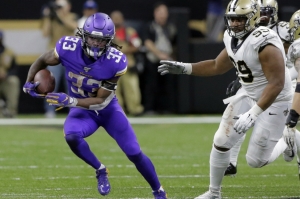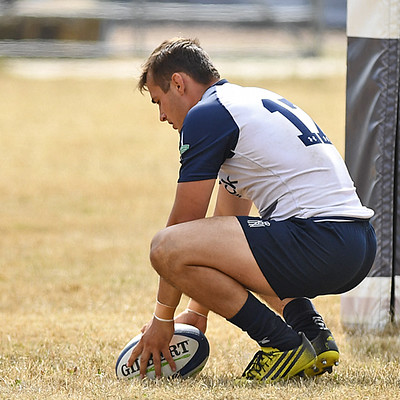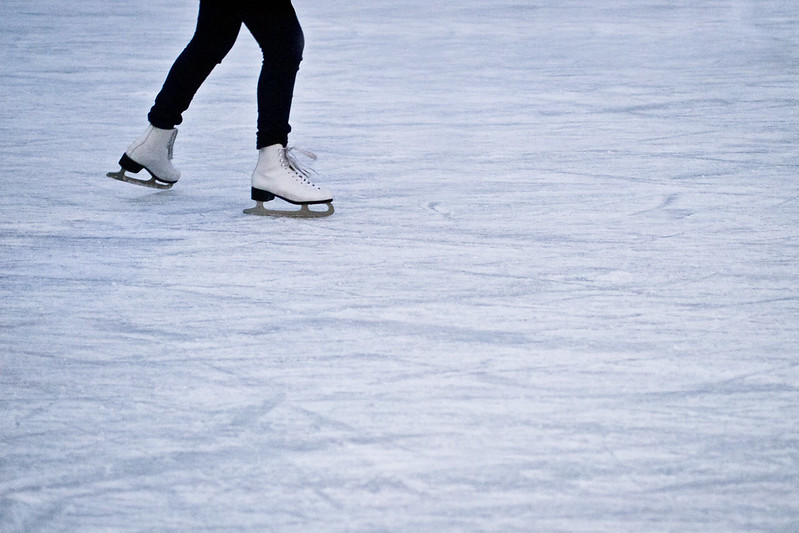Watching Virtual Sports
Emily Ryall
The existence of sport, for most, goes unquestioned. For many sports aficionados’ it is sport that regulates the calendar and marks the passing of one season to the next. Yet, this way of conceiving the world and our lives came to an abrupt halt in Spring 2020 with the COVID-19 pandemic. As a result, some sports tried to fill the gaps in the schedules, and appease the desire of their fans, by bringing in virtual forms of their sport. There are several examples of this, from Formula 1 which pitted F1 drivers against what might be called ‘gamers’ in simulated races, to the virtual Grand National, to the Skoda and Zwift cycling races, to elite tennis players playing tennis simulation games against each other. All of these examples are slightly different in their relationship to sport and the reasons for their introduction. The Grand National involved no players at all, just an AI generated race, the tennis example required none of the skills required to hit a tennis ball in real life, but the cycling and F1 events were more representative of the skills required for the real thing – cyclists wired up their bikes to the internet to take account of actual pedal power, whilst the F1 drivers sat in replica cars which required the same motor control as the real thing (albeit without the g-forces). So, whilst the experiences for the players and athletes may be very different, the question is what about the experience of the spectator? What do we, as spectators, want sport to look or be like? Does reality matter or is appearance of reality sufficient? And can virtual sports replicate the experience of ideal sport for spectators as well, or even better, than the real thing?
In order to consider these questions, a broader question about the ideal of sport needs to be answered. What does the ideal form sport look like? One way of answering this question is consider the features that are necessary for good sport: excellence of skill, novelty, genius, drama, anticipation of success of outcome. Equally, we might want to consider features that are antithetical to good sport: poor skill, mundanity, cheating, death and injury, lack of attainment.
Let’s take the aesthetic element first. One of the features of beautiful sport is graceful and smooth action. We enjoy the rhythm and flow; the ability to move the body successfully from one position to another. Think about the symmetry of a rowing eight moving their oars through the water in perfect sync, a skateboarder’s smooth transition from rail to rail across a three foot gap whilst the board turns and spins under the skateboarder’s feet in mid-air, or a footballer’s deft turn and sprint to navigate the ball past a defender. Now think about the common glitches in poor virtual simulations: the blocky and blurred graphics, the staccato movements of virtual players that defy the laws of physics as they overlap and appear through inanimate objects or other players, and the repetitive actions that are unable to replicate the originality of individual form and gait. As Roberts (1975, p95) notes, pleasure is gained from watching sport when our ideals match the reality: “the pleasure aroused will be proportionate to the degree in which the particular impression embodies the form of the evoked apperceived ideal and is thereby an exemplar of its class.” Our experience of watching past incarnations of virtual sport bear little resemblance to our ideals and illustrates why watching the ‘real thing’ is more attractive.
Yet it seems as if these limitations are being overcome. Consider, for example, game-play footage from the latest Madden game; a simulation of NFL football. The original official trailer interspersed real-life NFL footage from the virtual game footage and the differences between them can at times be hard to identify[1]. The movement of the simulated players replicates that of real players; it appears natural and represents a relationship between player intentionality and the laws of physics, such as when a player uses all their bodily effort to ensure both feet stay within the on field boundary when catching a ball; or when a player deftly ducks under a lunging tackler’s arm, or makes a hard cut in their running direction to avoid an oncoming defender (Figure 1)[2]. Similarly, when watching footage of real-life Formula 1 action and that which is virtually simulated, it is equally difficult to tell the difference (Figure 2). The camera angles are the same, the cars are as realistic in appearance, the movement and the physics replicates that of reality. The only significant identifying differences are with the quality of the virtual crowd which all seem to be the same human avatar with limited features and movement actions. On this basis then, the aesthetic differences in the realistic quality of movement and appearance of features and objects in simulated versions of real sports have diminished to such an extent that it is increasingly difficult for the human eye to tell the difference between them. Virtual sport is starting to match our apperceived ideal. Moreover, the latest releases of these virtual sports more accurately replicate the unique movements, gait and characteristics of real players. Such is the relationship between games franchises, sports governing bodies, and professional clubs, that players’ faces and bodies are 3-dimensionally mapped so that they are easily identifiable in the game itself. Fans are able to watch their real-life heroes perform on the virtual stage, and this enables salacious competitive match-ups and combinations. For instance, teams can consist of heroes from different decades, so Pele can play alongside Messi with Lev Yashin in goal.


Figure 1. Screenshot from Madden21 (https://media.contentapi.ea.com/content/dam/ea/madden-nfl/madden-nfl-21/media/screenshots/images/2020/05/m21-firstlook-dalvin-brktkl-final-01-apr30-ps06-wm.jpg.adapt.crop16x9.818p.jpg) and from NFL game (File Photo by AJ Sisco/UPI: https://cdnph.upi.com/svc/sv/upi/8291591655764/2020/1/eef9a9c7e9c40d8daf0afa428eaa3cde/Minnesota-Vikings-star-RB-Dalvin-Cook-holding-out-in-pursuit-of-new-contract.jpg)


Figure 2. Screenshot from F1 virtual Grand Prix (https://www.racefans.net/wp-content/uploads/2020/04/Screenshot-2020-04-05-22.26.08.jpg) and British Grand Prix 2020 (https://image-cdn.essentiallysports.com/wp-content/uploads/20200422193131/f1-39-800×534.jpg)
Let us move then to the related issue of demonstration of excellence of skill in sport. This is arguably one of the main reasons why elite sports are more attractive than amateur sport and why broadcasters will pay millions to show the English football premiership, the Olympic Games, and the Super Bowl. Audiences want to see the most skilful athletes perform at the highest level. And unless they have a personal or familial connection, they are not interested in watching a village team turn out to play on a Sunday afternoon. As noted above, past simulations of sports have tended to be based on limited actions of player or avatar and have been based on incomplete or inaccurate physical laws. In early manifestations of soccer games, balls could be kicked from player to player with little finesse: players who seemed to be a distance away from a landing ball would suddenly find it appear at their feet, whilst a ball that appeared to have been shot over the crossbar would end up in the back of the net. Not only was the quality of the graphics poor but the movement and skill of the players was limited in scope. There was little similarity between a real footballer controlling the ball and that of his graphic counterpart. Yet in the game FIFA20, there were 73 unique footballing skill moves able to be performed by players and ability level is based on their skill level as a real human athlete (so former FIFA world player of the year, Christiano Ronaldo is able to be far more skilful than second league, Grimsby midfielder, Brandon McPherson)[3]. The possibility of utilising and demonstrating such a range of skill within the game itself illustrates how the realism gap has reduced. As noted by Robin Bairner on Goal.com:
“There are as many as 21 dribbling tricks unique to 5-star skillers in FIFA 20, including the sombrero flick, the triple elastic, the advanced rainbow and the tornado spin left and right. These are the most spectacular dribbling moves in the game and are capable of bamboozling any opponent, so are worthwhile honing if you favour a side that has a high technical level. Meanwhile, there are also 11 5-star juggling tricks, including the in air elastic, flick up for volley and the drag back sombrero – a new trick added to the game.”[4]
What a player cannot do however is create their own tricks and this is arguably a key feature of ideal sport: the moments of genius whereby athletes enable a paradigm shift in how the sport is played (Lacerda and Mumford, 2010), e.g. Cruft turn, Fosbury flop, Mullen kick-flip, Schuschunova straddle to front support. Games players are only able to complete pre-programmed actions and whilst there may be scope for originality in game-playing through identifying programming glitches (Hemmingson, 2020), this does not allow the in-game character themselves to create new, sports specific bodily-realistic movements. Nevertheless, there is still potential for creativity and originality in the way in which the game is played. For example, the winner of the 2020 Madden championship, (aptly named) Joke, produced a controversial but highly original strategy for winning by putting a punter at quarterback, thus leveraging more player points for dominating the defence and run options[5]. He won the championship without making a single pass. Although this strategy was highly unusual and has not (so far) been attempted in the ‘real life’ version of the game, Joke was praised by EA Sports:
“For years Joke has been an innovator in Madden’s competitive formats, constantly pushing for every advantage. There is a reason he has been a constant presence in Madden’s majors. Other players in the event tried forms of that strategy and couldn’t pull it off.”[6]
However, the comprehensiveness of sports simulations, along with advances in artificial intelligences could spark originality and genius in the games themselves. In game characters could be enabled to develop original movements within the confines of physical laws. Artificial intelligence is able to produce original artworks, poetry, music, and dance choreography so it does not seem unreasonable to suggest it could create novel sporting movements.[7] After all, the rules of sport provide the boundaries but not necessarily the means. If the ‘rule’ is to navigate the ball with control past the body of an opposing player without using the arms, then there are undoubtedly methods of doing this that have so far been ignored or considered beyond the boundaries of human capability. But as shown by the fact that every year new and previously considered impossible sporting skills, are successfully completed, originality and creativity in sport continues. In a virtual world where no-one gets injured or is plagued by self-doubt or fear, the possibilities for original sporting skills and manoeuvres may be all the more likely.
This last point relates to a further concept of ideal sport in the reduction of risk and harm to those participating. Brain injury caused through sport is an increasing and high level concern, particularly in contact sports such as boxing, rugby, American football, and association football. In virtual sport, whilst injuries may be simulated for in-game characters, no actual harm comes to the real human players outside them. Consider for example, the virtual simulations of cycling or motor racing. Spectacular crashes may occur in virtual races but the cyclist pedalling on her static bike or sitting within the cockpit of the simulated car will not bear a scratch. In this then, we may wish to argue that the simulated versions are morally better since they reduce the risk of harm to those that participate in them.[8] For the sporting spectator however, we can have our cake and eat it. We can witness and revel in dramatic crashes, one punch knock-outs or brutal tackles safe in the knowledge that no-one has really been hurt in the process.
Ultimately then, the gap between real harm and virtual harm may also extend to the harm produced through unsporting conduct or cheating. Since the virtual game characters (and the background programme itself) are devoid of feeling emotion, they do not try to intimidate or challenge the referees or officials into changing their decisions. Similarly, they do not try to deceive officials into the fact they have been tackled illegally in the penalty area or in using prohibited equipment. That is of course, not to say that human players of these virtual sports do not cheat, since there have been high profile examples of cheating, such as Cameron Jeffers who was fined and banned by British Cycling from competition after using illegal equipment in a Zwift esport cycle race[9] and Daniel Apt who used an imposter to drive for him in a virtual F1 race[10], however, the in-game characters themselves have no motivation to cheat since they are not subject to the same human fallibilities and motivations. Equally, whilst game programming can be hacked, in the most part, the programme limits the type of rule breaking that can occur and limits the likelihood of players deceiving in game officials into making the wrong call. For the purist sports fan then, this lack of cheating and motivation to cheat may make the experience of watching virtual sports better since it will focus on the demonstration of excellent sporting skills rather than be spoiled by the negative aspects of human character.
Finally, let’s consider the future of the spectating experience for the sports fan. Purists and partisans alike may argue that the richest experience takes place by being in the sports ground itself; by feeling the mass of bodies drawing breath and exhaling together, cheering and jeering at scores and misses, the ground beneath your feet juddering as the benches you are sitting on shakes with anticipation of the starting whistle. Watching a replication of the sporting environment on screen is anaemic as a result. Yet the development of virtual reality suggests this may be able to replicate the experience of being live at a sports event, including experiences that you could only get if you were exclusively rich or were part of the team itself. Virtual reality for the sporting spectator could mean a seat on the front row, or the team’s bench, or even as an official or player themselves. The sporting spectator could watch the game through the eyes of someone else with a particular vantage point: sports could be watched from any perspective imaginable.
The possibilities of virtual sport becoming a viable substitute for the real thing may not therefore be as far fetched as one may initially suppose. When we ask ourselves, what do we want as spectators of sport, we come back to those sporting ideals which include beauty, excellence, originality, drama and a richness of experience, all of which may be replicated (if not now, but soon) in virtual mediums.
Bibliography
Cardy, S. (2020) Madden Championship Won Without Playing a Quarterback or Throwing a Pass. IGN. 26 May 2020. Available at: https://www.ign.com/articles/madden-championship-won-without-playing-a-quarterback-or-throwing-a-pass [Accessed August 2020]
Gumbrecht, H. U. (2006). In praise of athletic beauty. Belknap Press of Harvard University Press.
Hemmingsen, M. (2020). Code is law: subversion and collective knowledge in the ethos of video game speedrunning. Sport, Ethics and Philosophy, 1-26, 1–26. https://doi.org/10.1080/17511321.2020.1796773
Kreft, L. (2012). Sport as a drama. Journal of the Philosophy of Sport, 39(2), 219–234. https://doi.org/10.1080/00948705.2012.725898
Lacerda, T., & Mumford, S. (2010). The genius in art and in sport: a contribution to the investigation of aesthetics of sport. Journal of the Philosophy of Sport, 37(2), 182–193. https://doi.org/10.1080/00948705.2010.9714775
Mumford, S. (2012). Watching sport: aesthetics, ethics and emotion. London: Routledge.
Roberts, T. (1975) Sport and the sense of beauty. Journal of the Philosophy of Sport. 2(1): 91-101. DOI: 10.1080/00948705.1975.10654101
[1] https://www.youtube.com/watch?v=HNY5nsyMm-A
[2] However, there are some very good analyses of in-game player movement that suggest that the realistic appearances are superficial, see RyanMoody21’s ‘Madden21 gameplay – this looks awful’: https://www.youtube.com/watch?v=nY7bPlKD26A
[3] https://www.fifplay.com/fifa-20-skill-moves/
[4] https://www.goal.com/en-gb/news/fifa-20-ratings-every-player-with-5-star-skill-moves-list-of/182nqewejvb4n189w7gt9ftfxu
[5] As in the NFL and other franchise sports, there is the equivalent of a ‘salary cap’ which means teams have to be strategic about where they use their strengths. Most teams will go for a highly rated quarterback but this limits the amount left to use on other players: by omitting a quarterback this left Joke the room to enhance the rest of this team.
[6] Cardy, S. (2020) Madden Championship Won Without Playing a Quarterback or Throwing a Pass. IGN. 26 May 2020. Available at: https://www.ign.com/articles/madden-championship-won-without-playing-a-quarterback-or-throwing-a-pass [Accessed August 2020]
[7] https://www.forbes.com/sites/bernardmarr/2020/02/28/can-machines-and-artificial-intelligence-be-creative/#3a849ceb4580
[8] A counter-argument may be that playing virtual sports for long periods of time stores up the potential for chronic health conditions, since there is little physical activity taking place and even less time spent outside in the fresh air and with nature.
[9] https://www.britishcycling.org.uk/about/article/20191004-Charge-of-Unsporting-Conduct-in-the-2019-British-Cycling-eRacing-Championships-statement-0
[10] https://www.motorsportmagazine.com/articles/e-sports/esports/daniel-abt-suspended-from-audi-formula-e-drive-after-cheating-in-virtual-race











